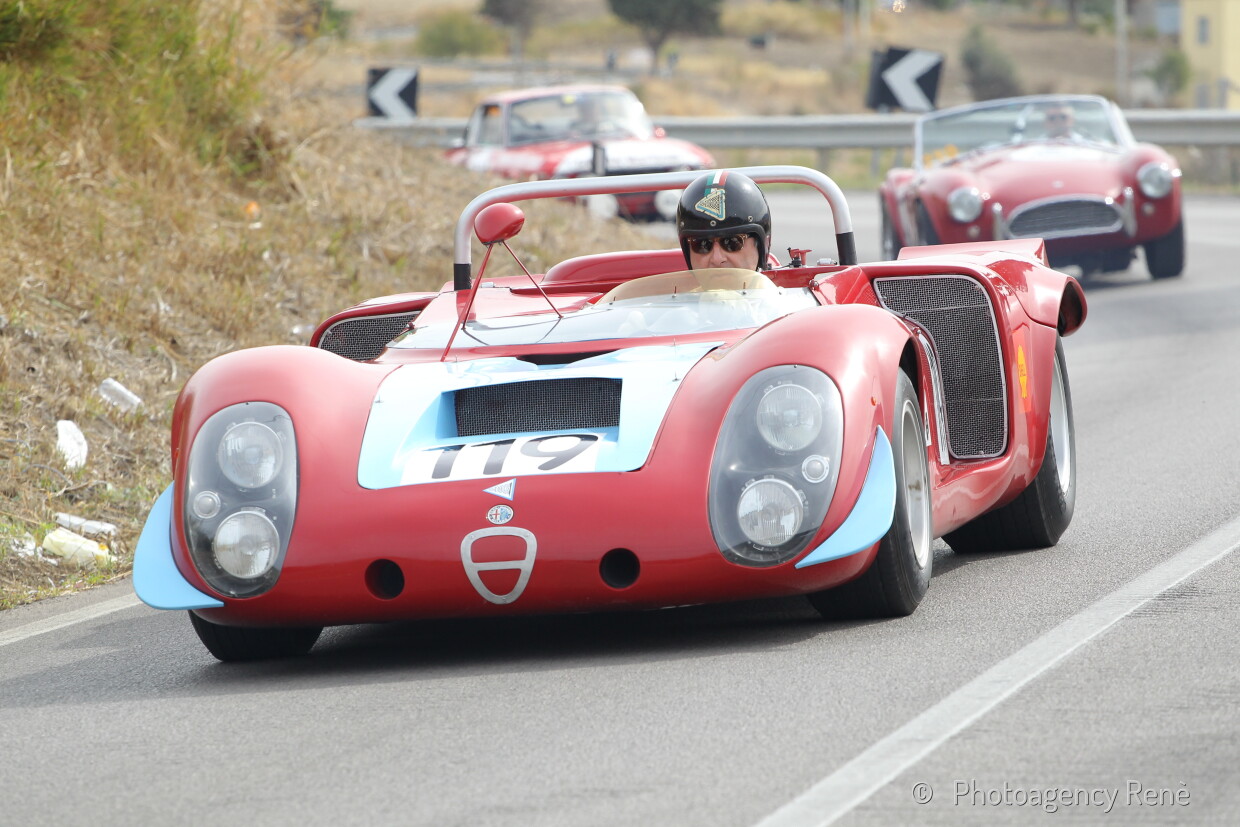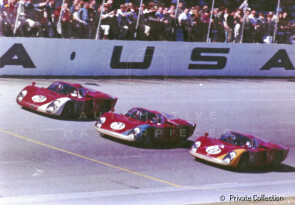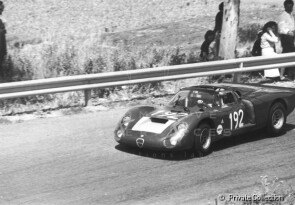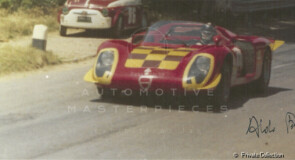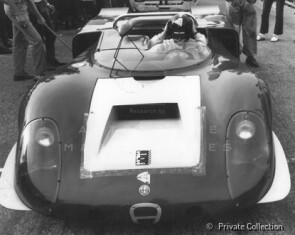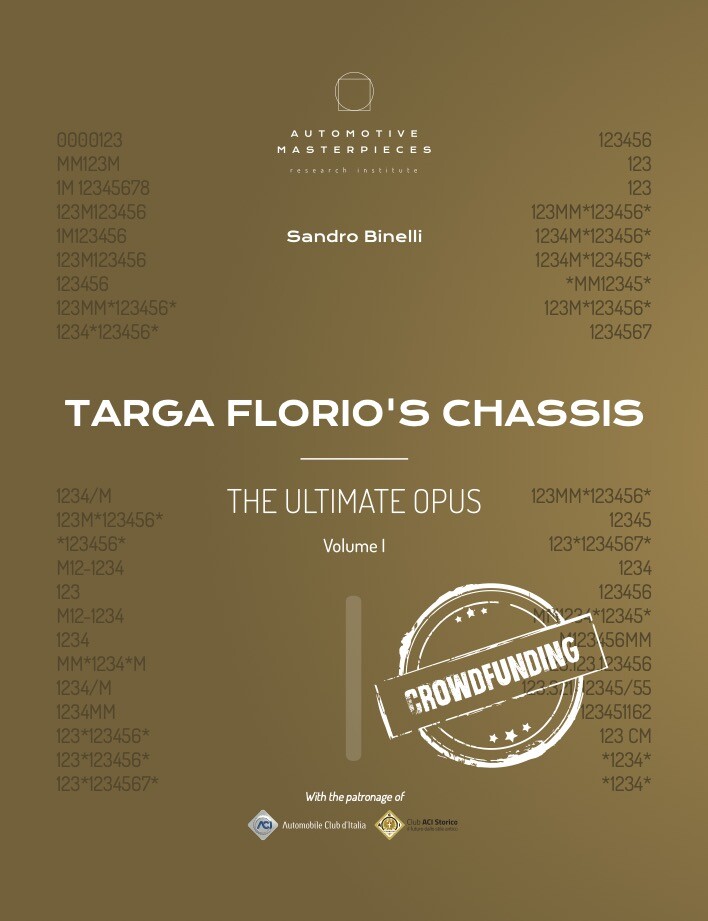
1968 Alfa Romeo Tipo 33/2
ON/OFF
Why am I an Automotive Masterpiece?
The Alfa Romeo Tipo 33 was a racing car produced from 1967 to 1977, created primarily to compete in the World Sportscar Championship and later also in the Can-Am series and in hillclimb racing. In 1967, the Alfa Romeo 33 Stradale was introduced, a road-going version derived directly from the racing prototype and considered one of the most beautiful sports cars ever built. The Tipo 33 and its derivatives achieved major success, winning two editions of the World Sportscar Championship, in 1975 and 1977, the latter with a dominant season in which Alfa Romeo won every race on the calendar. Alfa Romeo had officially withdrawn from motor racing in 1951, after securing the Formula 1 World Championship with the Tipo 159 Alfetta, and only resumed racing activities more than a decade later. Rather than returning to single-seater competition, Alfa Romeo decided to focus on closed-wheel categories, which at the time enjoyed strong popularity thanks to the World Sportscar Championship and the prestigious European Hillclimb Championship. For this purpose, a specially developed car was needed: a pure sports prototype, distinctly different from earlier Gran Turismo models such as the TZ. By the will of Alfa Romeo’s then-president Giuseppe Luraghi, the “105.33 project” was launched in the autumn of 1964. The number “105” referred to the internal code for the Alfa Romeo Giulia and its derivatives, while “33” was personally chosen by Luraghi to identify and distinguish the new prototype series. In the spring of 1965, the first prototype of the Tipo 33, designed at Alfa Romeo, was delivered to Autodelta—then still based in Udine—for development and racing preparation. Autodelta, under the direction of engineer Carlo Chiti, played a decisive role in the evolution of the car and in the management of Alfa Romeo’s racing activities throughout the decade. From a technical point of view, the first Tipo 33 was an advanced design for its time: it featured a lightweight tubular spaceframe chassis made of aluminium, with a central monocoque section, and it was powered by a compact 2-litre V8 engine developing around 270 hp. Over the following years, the project evolved through successive versions—33/2, 33/3, T33/4, 33TT12, and 33SC12—each representing a step forward in terms of engine capacity, power output, and aerodynamics. Alongside these main variants, special configurations were also developed, such as a long-tail version and the Mugello Spider, derived from the early “periscope” model. The Tipo 33 thus became the symbol of Alfa Romeo’s return to international racing, and its legacy is linked not only to the Stradale, but also to famous drivers such as Nino Vaccarella, Andrea De Adamich, Toine Hezemans, and Arturo Merzario, who brought the cars to victory on circuits and mountain roads across Europe.
In 1968 Alfa Romeo introduced the evolution of its prototype, the 33/2, designed and developed by the Racing Department and bodied by Franco Scaglione with elegant and aerodynamically refined lines. Compared to the very first Tipo 33, the 33/2 featured a strengthened and lightened chassis, improved suspension geometry, and a more reliable version of the 2-litre V8 engine, capable of delivering around 270 hp. These refinements made the car more competitive and consistent over long-distance races. The 33/2 made its mark at the 24 Hours of Daytona, a race dominated overall by the more powerful 2.2-litre Porsche 907s. Alfa Romeo, however, celebrated a remarkable success by taking first place in the 2-litre class, followed by two other sister cars. The extraordinary sight of the three red 33/2s crossing the finish line together, in formation, echoed the gesture Ferrari had staged with its 330 P the year before. From that moment, the Alfa Romeo 33/2 became popularly known by the evocative nickname “Daytona.” Daytona was only the beginning: the 33/2 went on to achieve further prestigious results during the 1968 season, such as class victories at the Targa Florio and the 1000 km of the Nürburgring, confirming the competitiveness of the Alfa Romeo prototype in the fiercely contested 2-litre category.
Fitted with a Berlinetta “Daytona” body, chassis no. 75033014 was entered by the factory in the 1968 24 Hours of Daytona as well as in the 1968 and 1969 Targa Florio races. When Alfa Romeo moved up to the 3-litre class in 1969, the car was sold to Aldo Bardelli, who campaigned it extensively in Italian hillclimbs between 1969 and 1971. During this period Autodelta converted the car into Spider form, a lighter open-top configuration better suited to mountain racing. Subsequently, the car became part of Peter Kaus’ Museo Rosso Bianco collection in Germany.
